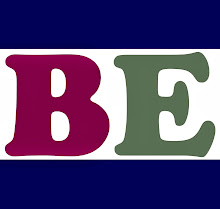Consumption is made possible by production and that credit is made possible by savings. The size and complexity of modern economies has obscured these simple concepts, but reducing the picture to a small scale can help clear away the fog.Peter Schiff on Putting the Economic Cart before the Horse
Suppose there is a very small barter-based economy consisting of only three individuals, a butcher, a baker, and a candlestick maker. If the candlestick maker wants bread or steak, he makes candles and trades. The candlestick maker always wants food, but his demand can only be satisfied if he makes candles, without which he goes hungry. The mere fact that he desires bread and steak is meaningless.
Enter the magic wand of credit, which many now assume can take the place of production. Suppose the butcher has managed to produce an excess amount of steak and has more than he needs on a daily basis. Knowing this, the candlestick maker asks to borrow a steak from the butcher to trade to the baker for bread. For this transaction to take place the butcher must first have produced steaks which he did not consume (savings). He then loans his savings to the candlestick maker, who issues the butcher a note promising to repay his debt in candlesticks.
In this instance, it was the butcher’s production of steak that enabled the candlestick maker to buy bread, which also had to be produced. The fact that the candlestick maker had access to credit did not increase demand or bolster the economy. In fact, by using credit to buy instead of candles, the economy now has fewer candles, and the butcher now has fewer steaks with which to buy bread himself. What has happened is that through savings, the butcher has loaned his purchasing power, created by his production, to the candlestick maker, who used it to buy bread.
Similarly, the candlestick maker could have offered “IOU candlesticks” directly to the baker. Again, the transaction could only be successful if the baker actually baked bread that he did not consume himself and was therefore able to loan his savings to the candlestick maker. Since he loaned his bread to the candlestick maker, he no longer has that bread himself to trade for steak.
The existence of credit in no way increases aggregate consumption within this community, it merely temporarily alters the way consumption is distributed. The only way for aggregate consumption to increase is for the production of candlesticks, steak, and bread to increase.
One way credit could be used to grow this economy would be for the candlestick maker to borrow bread and steak for sustenance while he improves the productive capacity of his candlestick-making equipment. If successful, he could repay his loans with interest out of his increased production, and all would benefit from greater productivity. In this case the under-consumption of the butcher and baker led to the accumulation of savings, which were then loaned to the candlestick maker to finance capital investments. Had the butcher and baker consumed all their production, no savings would have been accumulated, and no credit would have been available to the candlestick maker, depriving society of the increased productivity that would have followed.
On the other hand, had the candlestick maker merely borrowed bread and steak to sustain himself while taking a vacation from candlestick making, society would gain nothing, and there would be a good chance the candlestick maker would default on the loan. In this case, the extension of consumer credit squanders savings which are now no longer available to finance other capital investments.
Risky Plan
-
Imagine if
two evil spirits had attacked baby Jesus and strangled him while his
protecting angels were celebrating his birth with the shepherds.
What if
...
14 hours ago

No comments:
Post a Comment